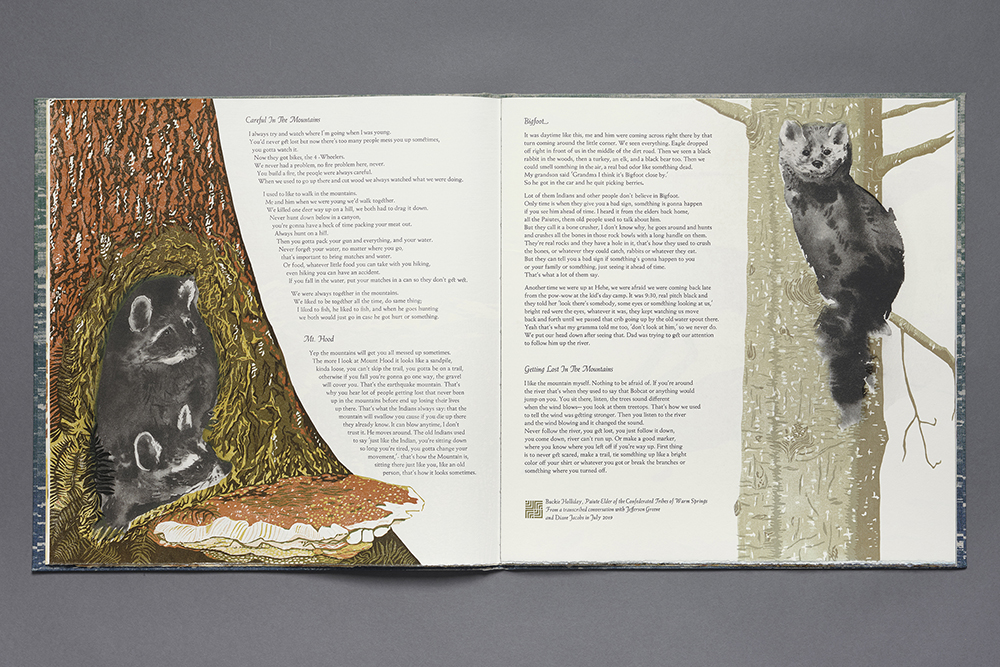
Owed to The Mountain
Owed to The Mountain is a sculptural artist book – the box unfolds one leaf at a time, to reveal each of the four cardinal directions. The Mountain is featured in four different printmaking techniques: West face – etching, North face – wood engraving, East face – lithograph, and South face – reduction woodcut. There are four linoleum cut river prints and three handset, letterpress-printed stories from the Confederated Tribes of Warm Springs. The box opens flat and in the center a paper mountain peeks through a cloud layer held up by five tree trunks. There are three handmade paper mountain skins nested inside one another. The outermost layer is made with celadonite pigment and accentuated with white ink exposing words. The middle surface details the dwindling glaciers and the innermost represents the volcanic strata. Beneath the mountain rests a fine press book. Animal ink drawings in various colorful ecosystems and habitats appear among the text, documenting the changing seasons. The stories weave multiple Native voices that underscore the value of friendship, reciprocity, interdependence, and cooperation. Intended outcomes are to cultivate knowing a place deeply; share indigenous wisdom; build community; and turn our love for the mountain into action where we demand a new management plan from the Mt Hood National Forest Service that prioritizes climate resilience and puts an end to industrial timber production.
Mt. Hood has the 6th largest carbon stores of all National Forests in the country! By galvanizing a movement that advocates for the 30 year old US Forest Service management plan to be updated, Mt Hood can be celebrated and treated as a living ecosystem and increase its climate resilience. Through this project’s research, interviews, and by spending time on the mountain, I understand how important it is that we protect clean drinking water, promote wildlife habitat restoration, support forest maturation, and prioritize the vision and cultural traditions of Native communities, including the practice of controlled burns. Fire suppression has left our forests and their inhabitants vulnerable to catastrophic fires. Native people have known all along that fire is an integral part of an interrelated system of people, plants, animals, and the land.. We owe it to the Mountain.
